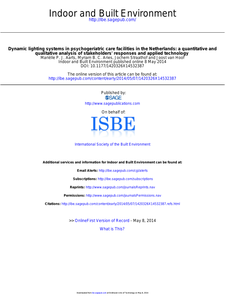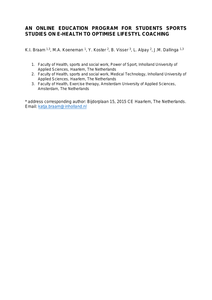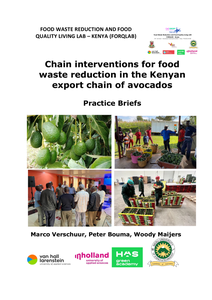In December of 2004 the Directorate General for Research and Technological Development (DG RTD) of the European Commission (EC) set up a High-Level Expert Group to propose a series of measures to stimulate the reporting of Intellectual Capital in research intensive Small and Medium-Sized Enterprises (SMEs). The Expert Group has focused on enterprises that either perform Research and Development (R&D), or use the results of R&D to innovate and has also considered the implications for the specialist R&D units of larger enterprises, dedicated Research & Technology Organizations and Universities. In this report the Expert Group presents its findings, leading to six recommendations to stimulate the reporting of Intellectual Capital in SMEs by raising awareness, improving reporting competencies, promoting the use of IC Reporting and facilitating standardization.
DOCUMENT

Genomics has multiplied the number of targets for new therapeutic interventions, but this has not yet lead to a marked increase of pharma pipeline outputs. The complexity of protein function in higher order biological systems is often underestimated. Translation from in vitro and in vivo results to the human setting frequently fails due to unforeseen toxicity and efficacy issues. Biosimulation addresses these issues by capturing the complex dynamics of interacting molecules and cells in mechanistic, predictive models. A central concept is that of the virtual patient, an encapsulation of a specific pathophysiological behaviour in a biosimulation model. The authors describe how virtual patients are being used in target identification, target validation and clinical development, and discuss challenges for the acceptance of biosimulation methods.
DOCUMENT
Purpose – Against the background of current leadership theory, this research paper analyses and compares the leadership approaches of two outstanding leaders: Daniel Vasella, chairman of the leading Swiss pharmaceutical organization Novartis and Ricardo Semler, owner of the Brazilian conglomerate Semco. In contrast to many rather abstract, unpractical and pointlessly theoretical papers on leadership this analysis provides a more applied view of leadership by means of the life history approach delivering insight into both leaders’ development and leader personality. Methodology/approach – First, this paper locates the ideas and practices associated with the term “leadership” as a concept through theories that have developed over time and shows how the practices of leading can be derived and understood through chosen theories. Based on this, the specific characteristics and career paths of both leaders are presented and compared so that a final analysis of their leadership approach can be done. The paper is based on secondary sources such as peer-reviewed business journals and literature on leadership. Information about both leaders and their approach to leadership is gathered mainly from published interviews with them. Additional information on Semler is taken from his autobiography. Conclusions – It is difficult to identify an “essence” of leadership, whether that takes the form of personality characteristics or traits, charisma, the ability to transform people or organizations or a brain function. All presented theories of leadership seem to have their raison d’être. Both Vasella and Semler apply a combination of different attitudes and behaviours that characterize their leadership style containing elements of transformational, charismatic, ethical, servant and authentic leadership.
MULTIFILE

We need mental and physical reference points. We need physical reference points such as signposts to show us which way to go, for example to the airport or the hospital, and we need reference points to show us where we are. Why? If you don’t know where you are, it’s quite a difficult job to find your way, thus landmarks and “lieux de memoire” play an important role in our lives.
LINK
Long-term care facilities are currently installing dynamic lighting systems with the aim to improve the well-being and behaviour of residents with dementia. The aim of this study was to investigate the implementation of dynamic lighting systems from the perspective of stakeholders and the performance of the technology. Therefore, a questionnaire survey was conducted with the management and care professionals of six care facilities. Moreover, light measurements were conducted in order to describe the exposure of residents to lighting. The results showed that the main reason for purchasing dynamic lighting systems lied in the assumption that the well-being and day/night rhythmicity of residents could be improved. The majority of care professionals were not aware of the reasons why dynamic lighting systems were installed. Despite positive subjective ratings of the dynamic lighting systems, no data were collected by the organizations to evaluate the effectiveness of the lighting. Although the care professionals stated that they did not see any large positive effects of the dynamic lighting systems on the residents and their own work situation, the majority appreciated the dynamic lighting systems more than the old situation. The light values measured in the care facilities did not exceed the minimum threshold values reported in the literature. Therefore, it seems illogical that the dynamic lighting systems installed in the researched care facilities will have any positive health effects.
DOCUMENT

In dit abstract wordt de ontwikkeling van een online onderwijsmodule beschreven gericht op eHealth voor leefstijlverbetering
MULTIFILE

This booklet presents the practice briefs (popular papers) of master and bachelor theses and business assignments of students at three Dutch Universities of Applied Sciences: Van Hall Larenstein (VHL), InHolland and HAS Green Academy, and Meru University of Science and Technology in Kenya. All theses and business assignments were commissioned through the researchproject entitled “Food Waste Reduction and Food Quality Living Lab (FORQLAB)” in Kenya.
DOCUMENT

Abstract: Background: Chronic obstructive pulmonary disease (COPD) and asthma have a high prevalence and disease burden. Blended self-management interventions, which combine eHealth with face-to-face interventions, can help reduce the disease burden. Objective: This systematic review and meta-analysis aims to examine the effectiveness of blended self-management interventions on health-related effectiveness and process outcomes for people with COPD or asthma. Methods: PubMed, Web of Science, COCHRANE Library, Emcare, and Embase were searched in December 2018 and updated in November 2020. Study quality was assessed using the Cochrane risk of bias (ROB) 2 tool and the Grading of Recommendations, Assessment, Development, and Evaluation. Results: A total of 15 COPD and 7 asthma randomized controlled trials were included in this study. The meta-analysis of COPD studies found that the blended intervention showed a small improvement in exercise capacity (standardized mean difference [SMD] 0.48; 95% CI 0.10-0.85) and a significant improvement in the quality of life (QoL; SMD 0.81; 95% CI 0.11-1.51). Blended intervention also reduced the admission rate (relative ratio [RR] 0.61; 95% CI 0.38-0.97). In the COPD systematic review, regarding the exacerbation frequency, both studies found that the intervention reduced exacerbation frequency (RR 0.38; 95% CI 0.26-0.56). A large effect was found on BMI (d=0.81; 95% CI 0.25-1.34); however, the effect was inconclusive because only 1 study was included. Regarding medication adherence, 2 of 3 studies found a moderate effect (d=0.73; 95% CI 0.50-0.96), and 1 study reported a mixed effect. Regarding self-management ability, 1 study reported a large effect (d=1.15; 95% CI 0.66-1.62), and no effect was reported in that study. No effect was found on other process outcomes. The meta-analysis of asthma studies found that blended intervention had a small improvement in lung function (SMD 0.40; 95% CI 0.18-0.62) and QoL (SMD 0.36; 95% CI 0.21-0.50) and a moderate improvement in asthma control (SMD 0.67; 95% CI 0.40-0.93). A large effect was found on BMI (d=1.42; 95% CI 0.28-2.42) and exercise capacity (d=1.50; 95% CI 0.35-2.50); however, 1 study was included per outcome. There was no effect on other outcomes. Furthermore, the majority of the 22 studies showed some concerns about the ROB, and the quality of evidence varied. Conclusions: In patients with COPD, the blended self-management interventions had mixed effects on health-related outcomes, with the strongest evidence found for exercise capacity, QoL, and admission rate. Furthermore, the review suggested that the interventions resulted in small effects on lung function and QoL and a moderate effect on asthma control in patients with asthma. There is some evidence for the effectiveness of blended self-management interventions for patients with COPD and asthma; however, more research is needed. Trial Registration: PROSPERO International Prospective Register of Systematic Reviews CRD42019119894; https://www.crd.york.ac.uk/prospero/display_record.php?RecordID=119894
DOCUMENT

Study goal: This study was carried out to answer the following research question: which motivation do healthy volunteers have to participate in phase I clinical trials? - Methods: A literature search was done through Google Scholar and Academic Search Premier, followed by three interviews with volunteers who had recently concluded their participation in a (non-commercial) phase I trial. - Results: Our literature search revealed mainly commercial motives for volunteers to participate in phase I clinical trials. The interviews (with volunteers in a non-commercial trial) showed that other factors may also play a decisive role, such as: (1) wish to support the investigator (2) wish to contribute to science, (3) access to more/better health care (4) sociability: possibility to relax and to communicate with other participants (5) general curiosity. Precondition is that risks and burden are deemed acceptable. - Conclusions: financial remuneration appears to be the predominant motive to participate voluntarily in a clinical trial. Other reasons were also mentioned however, such as general curiosity, the drive to contribute to science and the willingness to help the investigator. In addition, social reasons were given such as possibility to relax and to meet other people. Potential subjects state that they adequately assess the (safety) risks of participating in a trial as part of their decision process.
DOCUMENT

What options are open for peoplecitizens, politicians, and other nonscientiststo become actively involved in and anticipate new directions in the life sciences? In addressing this question, this article focuses on the start of the Human Genome Project (1985-1990). By contrasting various models of democracy (liberal, republican, deliberative), I examine the democratic potential the models provide for citizens' involvement in setting priorities and funding patterns related to big science projects. To enhance the democratizing of big science projects and give citizens opportunities to reflect, anticipate, and negotiate on newdirections in science and technology at a global level, liberal democracy with its national scope and representative structure does not suffice. Although republican (communicative) and deliberative (associative) democracy models meet the need for greater citizen involvement, the ways to achieve the ideal at a global level still remain to be developed.
DOCUMENT
